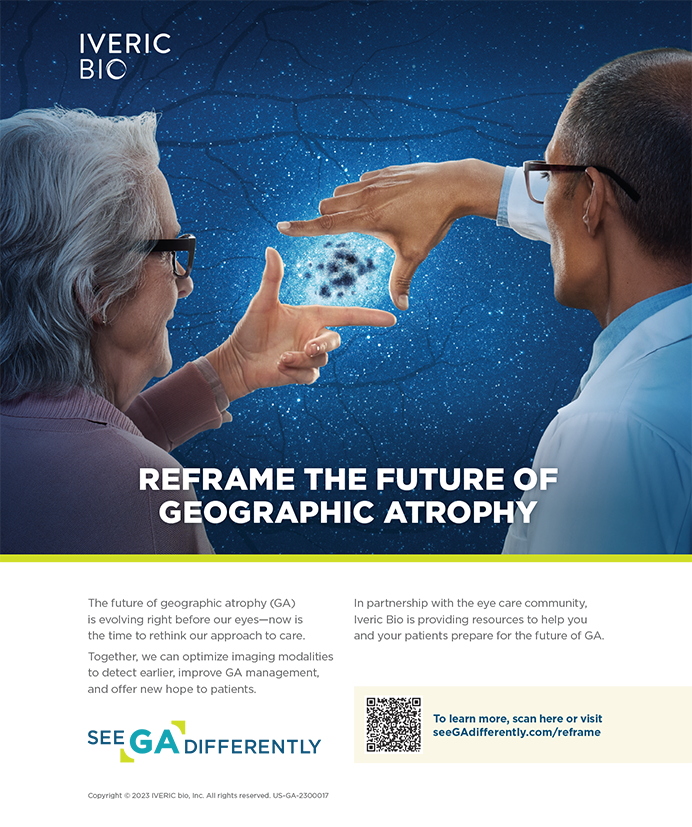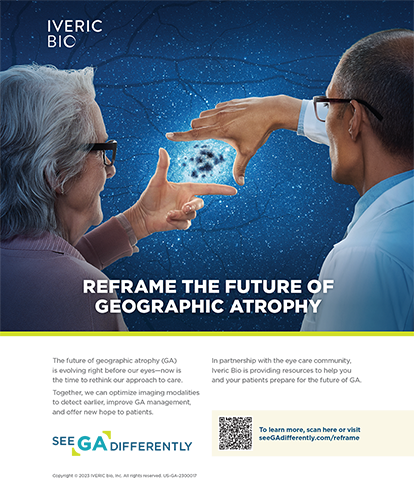
Bill Link, entrepreneur and backer to many ophthalmic startups, once said, “Nature teaches us that where there is turbulence there is often the most opportunity.”
I can’t imagine a more turbulent time than the one we are currently living in. In this moment of uncertainty, we are confronted with financial, social, political, workplace, and domestic disruption and upheaval, and we are facing serious health concerns that are affecting our families, friends, colleagues, and selves.
I am writing this at the end of day 4 of the shelter-in-place order by Ohio Governor Mike DeWine. It is hard to see the end in sight for what seems to be an escalating crisis. The novel coronavirus, now identified as SARS-CoV-2, and the disease caused by it, COVID-19, has literally stopped the world in its tracks. Schools are shut down, sports teams’ seasons are cancelled, the 2020 Summer Olympic Games have been postponed for 1 year. We are all caught in a transition period of unknowable length and consequences.
What is clear, however, is that this virus will touch everyone directly and/or indirectly. For most, COVID-19 began as a somewhat distant threat that evolved into what has now stopped our engines of normality. As infection becomes more widespread, it will continue to make its way to us on even more personal and professional levels.
As ophthalmologists, we are part of the front line. Li Wenliang, MD, a 34-year-old ophthalmologist in China, was the first doctor to sound the alarm about the novel coronavirus. Unfortunately, Dr. Wenliang contracted the virus from a glaucoma patient and passed away on February 7. Individuals can carry the virus in their tear film and ocular secretions, and the virus can also be transferred by aerosol inoculation. Therefore, eye care providers will contract the disease at a higher rate than other professionals.1 As is widely known, our primary patient base—people over age 60 years—is at a higher risk of morbidity and mortality.2
It is hard to find light in this sea of darkness. But to echo the sentiment shared by Bill Link, chaos is often the catalyst that gives birth to a stronger community. I envision ophthalmologists coming together with our other medical brothers and sisters. Together, we will cooperate with civic leaders to produce an effective army to fight this virus. Together, we will be a strong and positive force for our patients and local communities. Together, we will emerge stronger as a profession and as a society.
I also envision COVID-19 sparking permanent change in much of what we do. For example, I am impressed by how quickly providers have embraced and implemented telemedicine in their practices. This fundamental addition to patient care will help protect many, in the near term, from COVID-19 and countless others in the future from exposure to everyday illnesses and the inherent risks of travel. Likewise, in the wake of many society meetings being cancelled, I envision education transforming and adapting to different and potentially more effective modes of peer-to-peer learning.
I also envision changes in practice patterns, such as increased use of same-day bilateral cataract surgery as a means to decrease office visits and limit potential exposure. I envision even further adoption of comanagement as a way to decrease the number of patients in large ophthalmic waiting rooms in exchange for the smaller reception areas and more relaxed schedules found in optometric offices. I envision that our patients’ new habits of cleanliness will help decrease the risk of eye infections. Many doctors have updated practice patterns and staff procedures that will protect staff, decrease the spread of illness in the office, and prevent many iatrogenic infections.
I am confident our profession will continue to make meaningful improvements in patient care as we work through the current pandemic. An ophthalmologist in Wuhan, China, was the first doctor to identify the disease. It is now our turn to work our way through this and establish new standards that will usher in better patient care. We, as a society, will transcend this. But as we saw with the 9/11 terrorist attacks, COVID-19 will mark a time of before-and-after, and many things will never be the same.
With that said, I am hopeful for the day that COVID-19 is behind us and we can continue to thrive in a new norm, where social distancing and flattening the curve will not be important parts of daily vocabulary.
William F. Wiley, MD | Chief Medical Editor
1. Europe’s doctors repeat errors made in Wuhan, China medics say. Bloomberg News. https://www.bloomberg.com/news/articles/2020-03-17/europe-s-doctors-getting-sick-like-in-wuhan-chinese-doctors-say. Accessed March 26, 2020.
2. Andrew S. Worried about coronavirus? If your loved one is over 60, read this. CNN Health. https://www.cnn.com/2020/03/12/health/what-60-older-need-to-know-coronavirus-wellness-trnd/index.html. Accessed March 26, 2020.




